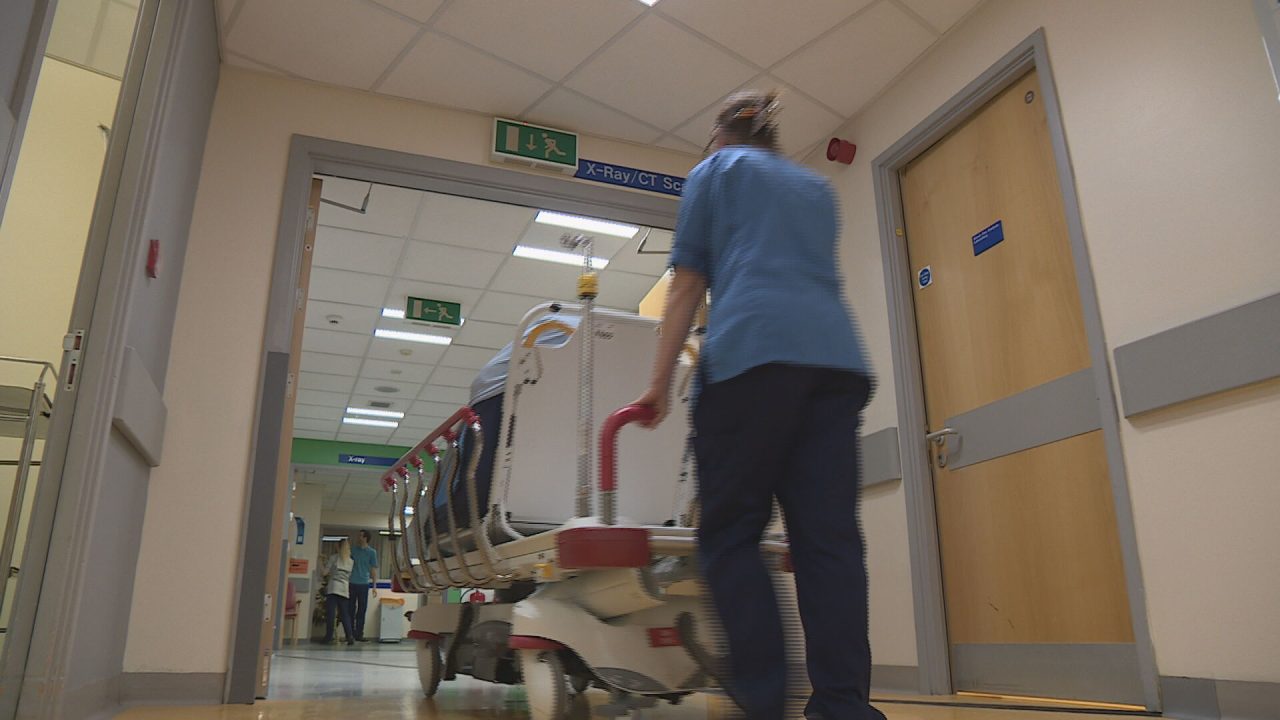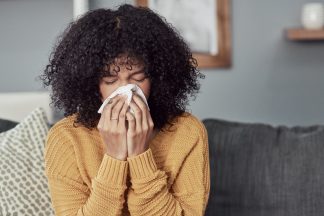Health chiefs are urging people to avoid coming to A&E unless they are seriously ill to ease pressure on overstretched hospitals this winter.
New figures from NHS Greater Glasgow and Clyde reveal two in three people (65%) who self-presented at Accident and Emergency (A&E) did not need to be there.
Of the 51,896 individuals who self-presented at A&E across the health board in a six-month period, 33,469 had injuries or illnesses that could have been treated elsewhere.
Ankle sprains, diarrhoea, and UTIs were among the most common self-referrals at emergency departments across the health board area.
Figures estimate more than 36,000 – nearly 100 every day – are self-presenting to A&E when they could be treated more quickly and appropriately elsewhere.
Dr Claire Harrow, deputy medical director for acute services, said staff are already braced for a busy festive period.
 STV News
STV NewsShe said: “I would say this winter is already quite tough. I don’t think any of our staff would say that they feel they had any respite over the summer. There wasn’t much of downtime so there is a bit of nervousness about what winter is going to be like.
“We do want to deliver the care that people need and want, but there are challenges and it’s not easy. We are doing absolutely everything that we can.
“Patient care is at the forefront of our minds, but clearly, in order to care for patients, we have to care for our staff. I know how tired people are and being in healthcare does take a toll.
“We are continuously trying to look out for and to listen to our staff when they’re telling us about how they feel on the ground.”
A self-presentation occurs when someone attends an A&E or Minor Injuries Unit without prior clinical consultation, such as with a GP or NHS24 (via 111). This winter, NHSGGC is appealing to the public for help in changing this trend.
It comes as A&E waiting times in Scotland reach the worst level since January, figures show.
Statistics released by Public Health Scotland (PHS) on Tuesday showed that just 59.5% of attendances at A&E were seen and subsequently admitted, transferred or discharged within fours hours in the week up to December 1, down from 61.2% the previous week.
The Scottish Government aims for this figure to be 95%.
The last time performance was as poor was in the week up to January 7, making it the fifth worst waiting times on record.
Claire said the health service is dealing with a “significant” number of delayed discharges which is impacting the hospital flow.
 STV News
STV NewsShe urged people to consider other forms of care and stressed that A&E is intended for life-threatening conditions and the most serious injuries.
“We are here to deliver the care that people need when they need it, but as part of that, we are asking the public to work with us,” she said.
“So we are asking people to think carefully before they bring themselves to an emergency department, to think about what the other options might be for them to get the care that they need and if they are not sure to call NHS 24.
“We don’t lose sight of the fact that all the numbers, all the statistics, all the percentages, each of them are individual patients who matter.
“Corridor care is clearly not what we want to be doing but we are working very hard to free up cubicle and bed space in our hospitals. We have teams working to ensure patients are prioritised appropriately.
“Our hospitals are open. We are here to help and to care for people. But we would ask that if people are unwell, that they think about where is the place that their needs can best be made? Are there alternatives to presenting accident and emergency? If you’re not sure, call 111.”
 STV News
STV News STV News
STV NewsNHSGGC has identified the top five minor injuries that people attended A&E with, which could have been treated elsewhere. These include ankle sprains or strains, lower back pain, open finger wounds, wrist injuries, and strained feet.
The top five minor illness resulting in attendance at A&E between January and June were viral infections, acute upper respiratory infections, diarrhoea and gastroenteritis, urinary tract infections (UTI), and acute tonsillitis.
Niamh Collins is a senior charge nurse at Glasgow Royal Infirmary.
She said people are visiting A&E with upset stomachs, sore throats, urine infections and viral respiratory illnesses.
She said they have also seen an increase in flu and Covid presentations to the department.
She explained that patients are seen by a signposting nurse to determine whether their health needs could be met elsewhere before they come to triage where their care is assessed from there.
 STV News
STV News“We have got a well embedded triage system here,” she added.
“Sometimes we have a situation where all our cubicles are full. We’ve got very limited bed capacity within the hospital, so it’s difficult to move the patients on from here.
“When all our corridor spaces are full, we are having to keep people in ambulances before we can offload them. That is not a situation anyone wants to have. It is certainly not what the staff want, but due to the overwhelming numbers, sometimes it does happen.
“People that need to be seen immediately will still get seen immediately, people that need to get seen very urgently will still get seen very urgently. But for those other people that it is not an immediate issue, then there is a waiting time, sometimes of several hours.
“That is why we are having this conversation – so that we can try and stop people coming if they don’t need to be here.”
To remind people of the steps to get the care they need, NHSGGC is asking people to follow its ABC model:
- Ask yourself: Do I need to go out? For information on keeping yourself well and treating minor illnesses and injuries from home, go to NHS Inform or download the NHS24 app.
- Be aware: There is help for many conditions right on your doorstep. Your local GP, pharmacy, dentist, or optician offers a range of services.
- Call 111: If it’s urgent, or you’re not sure, call NHS 24 on 111. They’ll make sure you get the help you need.
Follow STV News on WhatsApp
Scan the QR code on your mobile device for all the latest news from around the country


























